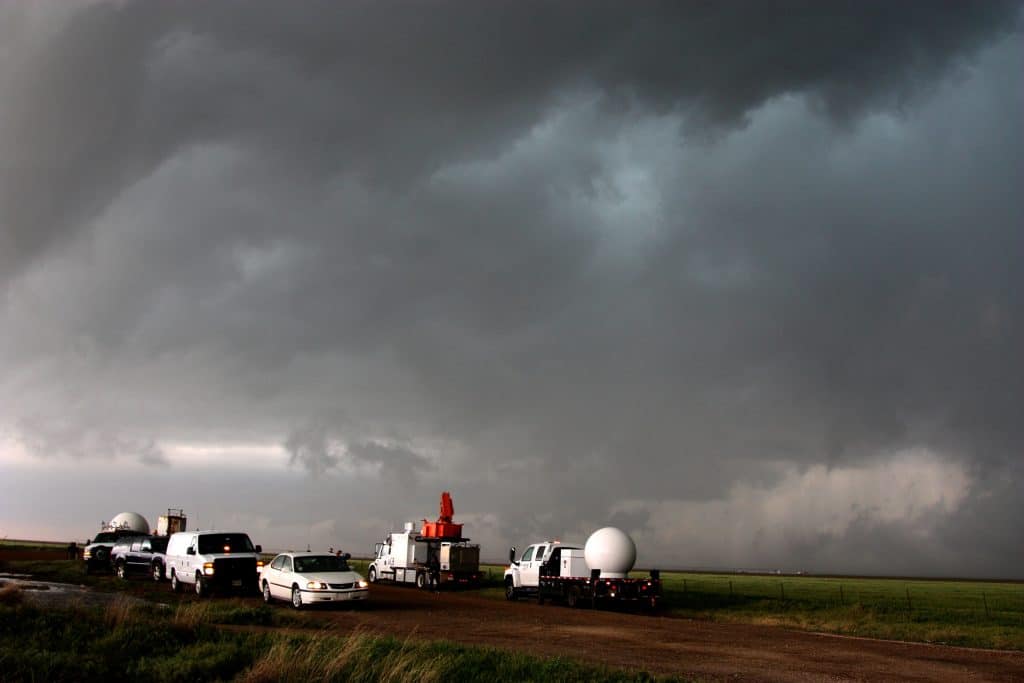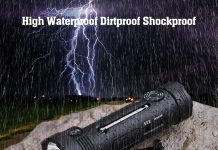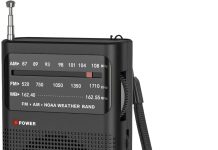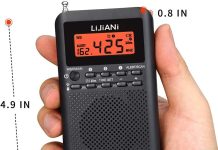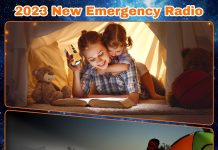Setting up and using an emergency weather radio may seem like a daunting task for many, but fear not, dear readers! In this article, we will walk you through the process, step by step, ensuring that you are well-equipped to stay informed and safe during severe weather conditions. Whether you are a novice or a seasoned pro, we’ve got you covered with easy-to-follow instructions and helpful tips that will make setting up and using an emergency weather radio a breeze. So, sit back, relax, and let’s take the uncertainty out of weather radio setup!
This image is property of images.unsplash.com.
Review contents
Choosing an Emergency Weather Radio
Consider Your Needs
When choosing an emergency weather radio, it is important to consider your specific needs and requirements. Are you looking for a radio that can be used both indoors and outdoors? Do you need a radio that has a long battery life or one that can be easily recharged? Think about the situations in which you will be using the radio and what features are essential to meet your needs.
Research Different Models
There are numerous models of emergency weather radios available on the market, each offering different features and functionalities. Take the time to research and compare different models to find the one that best suits your needs. Look for features such as weather alert capabilities, battery life, durability, and ease of use. Reading product descriptions and specifications will give you a better understanding of what each model offers.
Read Online Reviews
To get a better idea of the performance and reliability of different emergency weather radios, it is helpful to read online reviews from other users. These reviews provide valuable insights into the pros and cons of specific models, as well as any potential issues or limitations. Look for reviews that are detailed and provide specific information about the radio’s performance in real-life situations.
Seek Recommendations
Another helpful way to narrow down your options is to seek recommendations from friends, family, or colleagues who may already own an emergency weather radio. Their firsthand experiences and insights can provide valuable guidance in choosing the right radio for your needs. They may also be able to offer advice on specific models or brands that have proven to be reliable in emergency situations.
Compare Features and Prices
Once you have gathered information from research, online reviews, and recommendations, it is time to compare the features and prices of the emergency weather radios you have shortlisted. Look for features that are important to you, such as multiple weather alert modes, customizable alerts, or additional functions like an AM/FM radio or LED flashlight. Consider the price range that you are comfortable with and choose a radio that offers the best combination of features and value for your budget.
Understanding the Setup Process
Unpacking the Radio
Once you have purchased your emergency weather radio, the first step is unpacking it from its packaging. Carefully remove the radio, accessories, and any accompanying documentation. Pay attention to any warnings or instructions provided by the manufacturer.
Examining the Components
Before you start setting up your emergency weather radio, it is helpful to examine the different components and familiarize yourself with their functions. Look for components such as the radio unit itself, the antenna, power adapters or batteries, and any additional accessories or attachments.
Installing Batteries or Power Source
Depending on the model of your emergency weather radio, it may require batteries or have a built-in power source. If your radio uses batteries, open the battery compartment and insert the required batteries according to the manufacturer’s instructions. Alternatively, if your radio has a built-in power source, ensure that it is fully charged or connected to a power outlet.
Connecting the Antenna
The antenna is a crucial component of the emergency weather radio as it helps in receiving weather alerts accurately. Locate the antenna connection point on the radio and attach the antenna securely. Extend the antenna to its full length and position it for optimal reception.
Plugging In or Turning On the Radio
Before you can start using your emergency weather radio, you will need to plug it into a power outlet or turn it on if it has a built-in power source. Follow the instructions provided by the manufacturer to ensure proper power supply to the radio. Once the radio is powered on, you can proceed to navigate its user interface and customize the settings.
Navigating the User Interface
Basic Button and Dial Functions
Most emergency weather radios have a user-friendly interface with clearly labeled buttons and dials. Familiarize yourself with the basic functions of the buttons, such as power on/off, volume control, channel selection, and alert activation. Take note of any specific dial functions, such as tuning in to different channels or adjusting the brightness level.
Setting the Time and Date
It is important to set the correct time and date on your emergency weather radio to ensure accurate alerts. Consult the user manual or instructions provided by the manufacturer to learn how to access the time and date settings. Follow the steps provided to set the correct time and date based on your location.
Selecting Language Preferences
Many emergency weather radios offer language preferences, allowing you to select the language in which alerts and instructions are communicated. Access the language settings in the user interface and choose your preferred language. This ensures that you will be able to understand and respond appropriately to any alerts or messages received.
Adjusting Volume and Brightness
To personalize your experience with the emergency weather radio, adjust the volume and brightness settings. Find the volume control button or dial and adjust it to a comfortable level. Similarly, locate the brightness settings and set it to a level that is suitable for your environment and visibility preferences.
Switching Between Channels
Emergency weather radios usually have multiple channels to choose from, each broadcasting different types of alerts and information. Familiarize yourself with the process of switching between channels to ensure that you can access the necessary information when required. Learn how to tune in to the NOAA weather channels that provide the most relevant alerts for your area.
Programming Weather Alerts
Understanding NOAA Weather Channels
The National Oceanic and Atmospheric Administration (NOAA) operates a network of weather radio stations that broadcast weather alerts and information. It is essential to understand how the NOAA weather channels work and which channels are relevant to your location. Consult the user manual or instructions provided by the manufacturer to learn more about the NOAA weather channels and their corresponding frequencies.
Enabling Specific Alert Features
Most emergency weather radios allow you to customize the alert features based on your preferences. These features may include tone alerts, voice alerts, or text alerts. Explore the user interface of your radio to enable or disable specific alert features based on your preferences. Consider the situations in which you will be using the radio and choose the alert features that are most effective for your needs.
Choosing Alert Modes (Tone, Voice, Text)
Emergency weather radios offer different alert modes to accommodate various communication preferences. The most common alert modes include tone alerts, voice alerts, and text alerts. Tone alerts are often accompanied by a siren-like sound, voice alerts provide spoken messages, and text alerts display written messages on the radio’s screen. Select the alert mode that you find most effective and understandable in emergency situations.
Selecting Preferred Counties or Areas
To receive accurate weather alerts, it is important to select the preferred counties or areas for which you want to receive notifications. Consult the user manual or instructions provided by the manufacturer to learn how to access the settings for preferred counties or areas. Choose the locations that are most relevant to you and consider any areas where you may have family or friends in need of alerts.
Customizing Severe Weather Notifications
Many emergency weather radios offer the option to customize severe weather notifications. This allows you to select the specific types of severe weather events for which you want to receive alerts, such as tornadoes, hurricanes, or flash floods. Consult the user manual or instructions provided by the manufacturer to learn how to access and customize severe weather notifications according to your preferences.
This image is property of images.unsplash.com.
Receiving and Understanding Alerts
Recognizing Different Alert Tones
When an emergency weather alert is received, the radio will emit a specific tone to grab your attention. Take the time to familiarize yourself with the different alert tones and their corresponding meanings. Each alert tone indicates a specific type of weather event, such as a tornado warning or a flood watch. Understanding these alert tones will help you react appropriately to each situation.
Listening to Voice Alerts
In addition to the alert tones, emergency weather radios may also provide voice alerts that deliver spoken messages. Pay close attention to these voice alerts as they provide valuable information about the current weather conditions and any potential hazards. Listen carefully to the instructions provided and take immediate action if necessary.
Reading Text Displayed on the Radio
Some emergency weather radios have built-in screens that display text messages along with the alert tones or voice alerts. When an alert is received, the radio may display information such as the type of alert, the affected area, and any recommended actions. Read the text carefully to understand the specifics of the alert and respond accordingly.
Reacting to Different Types of Alerts
Depending on the severity of the alert received, your response may vary. For less severe alerts, such as watches or advisories, it is important to stay informed and prepared for any potential changes in the weather. For more severe alerts, such as warnings or immediate threats, take immediate action to ensure your safety and the safety of those around you. Follow any instructions provided by the emergency weather radio and local authorities.
Interpreting Weather Terminology
When receiving weather alerts, it is common to encounter various weather-related terminologies. Take the time to familiarize yourself with these terminologies to ensure that you understand the significance of each term. Learn the difference between terms like “watch” and “warning,” as well as any specific details or instructions associated with each term.
Maintaining and Updating the Radio
Replacing Batteries or Power Source
To ensure that your emergency weather radio is always ready to provide reliable alerts, it is important to regularly check and replace the batteries or power source. Consult the user manual or instructions provided by the manufacturer to learn how to replace the batteries or properly maintain the power source. Regularly check the battery life to ensure that it is sufficient for uninterrupted operation.
Keeping the Antenna in Good Condition
The antenna plays a crucial role in receiving clear and accurate weather alerts. Keep the antenna clean and free from any obstructions or damage that may affect its performance. Follow any maintenance instructions provided by the manufacturer to ensure that the antenna remains in good condition. If necessary, consider investing in an external antenna for better reception in areas with weak signals.
Cleaning the Radio
Regularly cleaning your emergency weather radio is important to keep it in good working condition. Use a soft cloth or brush to remove any dust, dirt, or debris from the radio’s exterior. Be cautious when cleaning around buttons, dials, or the screen to avoid causing any damage. Avoid using harsh chemicals or abrasive materials that may scratch or damage the radio’s surface.
Performing Firmware or Software Updates
To ensure optimal performance and access to the latest features, it is recommended to regularly check for firmware or software updates for your emergency weather radio. Consult the user manual or instructions provided by the manufacturer to learn how to perform updates correctly. Updating the firmware or software will not only enhance the radio’s performance but also address any potential issues or bugs that may affect its functionality.
Troubleshooting Common Issues
In the event that you encounter any issues with your emergency weather radio, it is helpful to have troubleshooting knowledge. Consult the user manual or instructions provided by the manufacturer for a list of common issues and their corresponding solutions. Troubleshooting steps may include checking the antenna connection, resetting the radio, or contacting customer support for further assistance.
This image is property of images.unsplash.com.
Enhancing the Radio with Accessories
External Antennas for Better Reception
If you frequently find yourself in areas with weak or intermittent signals, consider investing in an external antenna for your emergency weather radio. External antennas can significantly improve reception and ensure that you receive clear and accurate weather alerts even in challenging environments. Consult the user manual or instructions provided by the manufacturer to learn how to connect and use an external antenna with your specific radio model.
Portable Solar Chargers
To ensure uninterrupted power supply for your emergency weather radio, especially in situations where electricity is unavailable, a portable solar charger can be a valuable accessory. Portable solar chargers use solar energy to charge the radio’s batteries, providing a reliable and eco-friendly power source. Ensure that the portable solar charger is compatible with your emergency weather radio and follow the manufacturer’s instructions for proper usage.
Carrying Cases or Weatherproof Bags
To protect your emergency weather radio from dust, water, and other potential damage, consider investing in a carrying case or weatherproof bag. These accessories provide additional protection during transportation or outdoor use. Look for carrying cases that are specifically designed for your radio model to ensure a perfect fit and easy accessibility to the radio’s buttons and controls.
Headphones or External Speakers
For private listening or to enhance the audio quality of your emergency weather radio, headphones or external speakers can be a valuable accessory. Consult the user manual or instructions provided by the manufacturer to learn how to connect and use headphones or external speakers with your specific radio model. Consider the comfort, sound quality, and portability of the headphones or speakers before making a purchase.
Mounting Options for Home or Vehicle Use
To ensure easy access to your emergency weather radio, consider mounting options that are suitable for your needs. Mounting your radio in a fixed location, such as on a wall or in your vehicle, keeps it within reach and readily available in emergency situations. Consult the user manual or instructions provided by the manufacturer to learn about the compatible mounting options for your specific radio model.
Additional Features and Functions
AM/FM Radio Capabilities
In addition to the primary function of receiving weather alerts, many emergency weather radios offer AM/FM radio capabilities. This allows you to listen to your favorite radio stations and stay entertained or informed during non-emergency situations. Explore the user interface of your radio to learn how to switch between the weather alert mode and the AM/FM radio mode for a versatile listening experience.
Siren or Emergency Alert System Integration
In some cases, emergency weather radios can be integrated with other emergency alert systems, such as sirens or public address systems. This integration ensures that you receive alerts through multiple channels, increasing the likelihood of timely and effective communication. Consult the user manual or instructions provided by the manufacturer to learn how to integrate your emergency weather radio with other alert systems.
LED Flashlight or Emergency Beacon
Many emergency weather radios include additional features such as an LED flashlight or emergency beacon. These features provide additional functionality and can be valuable during power outages or when visibility is limited. Learn how to activate and use these features on your specific radio model to ensure their availability in emergency situations.
Cell Phone Charging Capability
Some advanced emergency weather radios offer the convenience of charging your cell phone through their built-in charging ports. This feature can be invaluable in situations where power outlets are not readily available, allowing you to maintain communication with family, friends, and emergency services. Consult the user manual or instructions provided by the manufacturer to learn how to properly use the cell phone charging capability of your radio.
Bluetooth or Wireless Connectivity
For enhanced connectivity and convenience, certain emergency weather radios offer Bluetooth or wireless capabilities. This allows you to connect your radio to other devices, such as your smartphone or tablet, to stream music, podcasts, or other audio content. Explore the user interface of your radio to learn how to enable and use Bluetooth or wireless connectivity features.
Educational Resources and Support
User Manuals and Guides
One of the most valuable resources for understanding and navigating your emergency weather radio is the user manual or guide provided by the manufacturer. Consult the user manual for in-depth instructions, troubleshooting tips, and detailed information about the specific features and functions of your radio. Keep the user manual handy for quick reference whenever you have any questions or need assistance.
Video Tutorials and Demonstrations
In addition to user manuals, many manufacturers provide video tutorials and demonstrations that visually guide you through the setup, programming, and usage of their emergency weather radios. These videos can be incredibly helpful in providing a step-by-step walkthrough and addressing common questions or issues. Search the manufacturer’s website or online video platforms for relevant video tutorials.
Frequently Asked Questions (FAQs)
Manufacturers often compile a list of frequently asked questions (FAQs) that address common concerns or inquiries about their emergency weather radios. These FAQs cover a wide range of topics and can provide valuable insights or solutions to common issues. Consult the manufacturer’s website or product page for the FAQs related to your specific radio model.
Manufacturer’s Customer Support
If you encounter any difficulties or have specific questions about your emergency weather radio, reaching out to the manufacturer’s customer support team can provide the assistance you need. Manufacturers typically offer various channels of customer support, including phone support, email support, or live chat. Consult the manufacturer’s website or product documentation for the contact information and hours of operation for customer support.
Online User Communities and Forums
Joining online user communities and forums dedicated to emergency weather radios provides an opportunity to connect with other radio users, exchange experiences, and seek advice. These communities are often populated by passionate and knowledgeable individuals who can provide valuable insights and troubleshooting assistance. Participate in discussions, ask questions, and share your own experiences to benefit from the collective knowledge and expertise of the community.
Conclusion
Choosing, setting up, and using an emergency weather radio may initially seem daunting, but with the right resources and knowledge, it can become a simple and essential tool for staying informed and prepared in emergency situations. By considering your needs, researching different models, and understanding the setup process, you can choose a radio that meets your requirements. Navigating the user interface, programming weather alerts, and understanding alerts are important steps to ensure effective usage. Regular maintenance, enhancing the radio with accessories, and utilizing additional features further enhance the capabilities of your emergency weather radio. Educational resources and support provide valuable guidance and troubleshooting assistance. With careful consideration and proper utilization, an emergency weather radio becomes a reliable companion, keeping you informed and safe during severe weather events.


